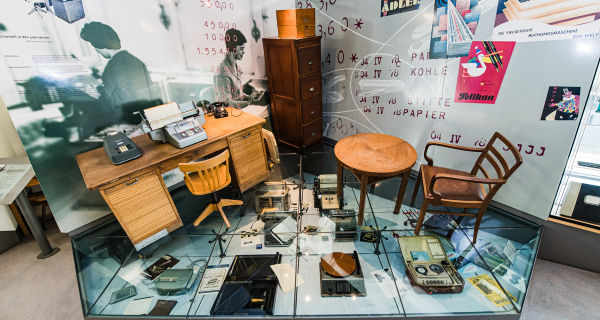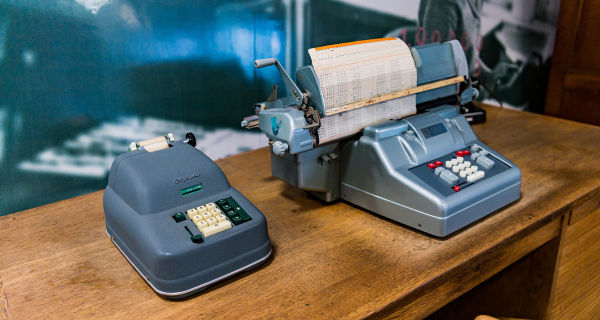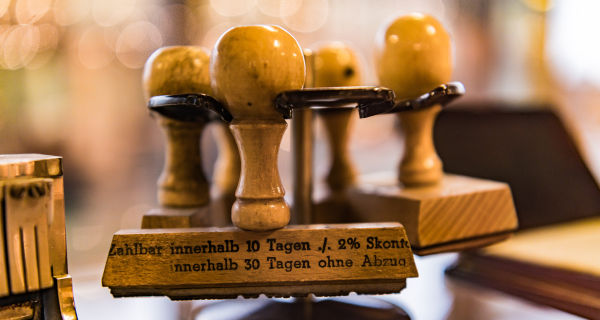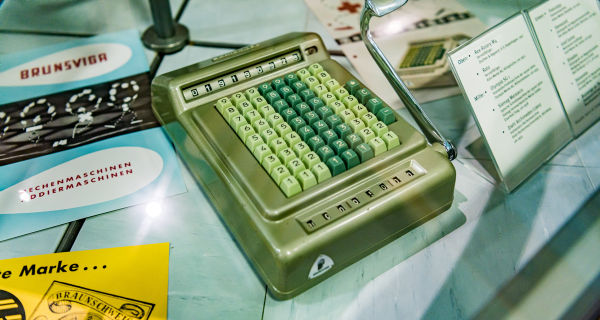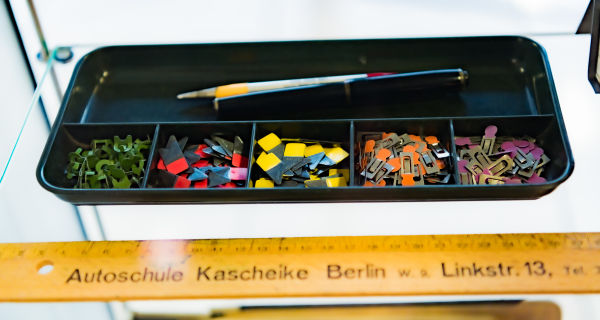In the 1950s, the culture and equipment of offices was still frequently determined by the pre-war era. At the end of World War II, small companies continued to work with old equipment and machines for a long time. Such an accounting office can be seen in the exhibition.
Small aids to daily office work
But soon there was an increase in the use of modern office machines in smaller offices, too. Accounting machines, dictating machines and reproducing equipment supplemented the widespread typewriters and calculators. It was not just typical office machines that became more and more widespread but also small aids to daily office work. Staplers, punches and pencil sharpeners became mass-produced items. The design of these products was also adapted to the time. Streamlined shapes are thus not only found in American limousines but also in office equipment.
Optimization of workflow
The increasing use of office machines changed working procedures and structures in many ways. Rationalization was the keyword of the day - and not just in offices.
Experiences with large offices in the 1920s were transferred to smaller businesses. The aim was to optimize the flow of work and deploy staff as rationally as possible. One way of doing this was to split operations into small steps, which resulted in even more division of labour. Like manufacturing processes, office work was to be organized on a production-line basis. Monotonous work on machines was carried out almost exclusively by women, whereas managerial functions remained firmly in the hands of men. This applied primarily to typing and accounting. Women were book-keepers responsible for posting individual items, whereas men were the chief accountants.
However, the division of labour did not progress as rapidly in small companies. In craft businesses, for example, it was frequently the wife of the proprietor who did the accounting - without accounting machines. Handwritten accounting remained widespread in such sectors for a long time.
